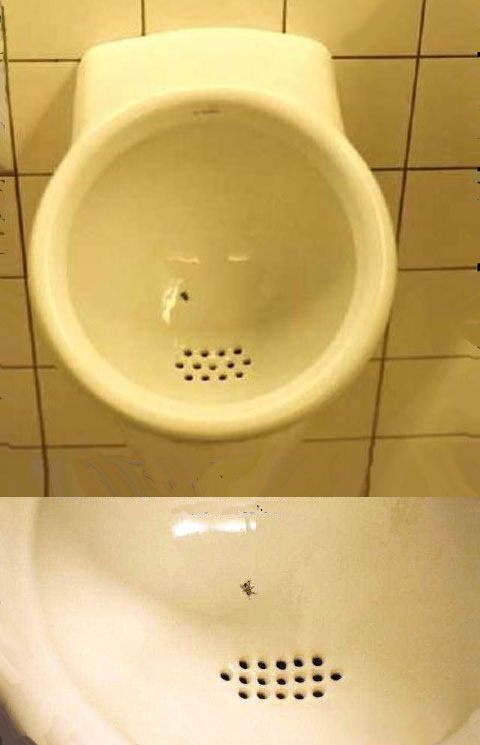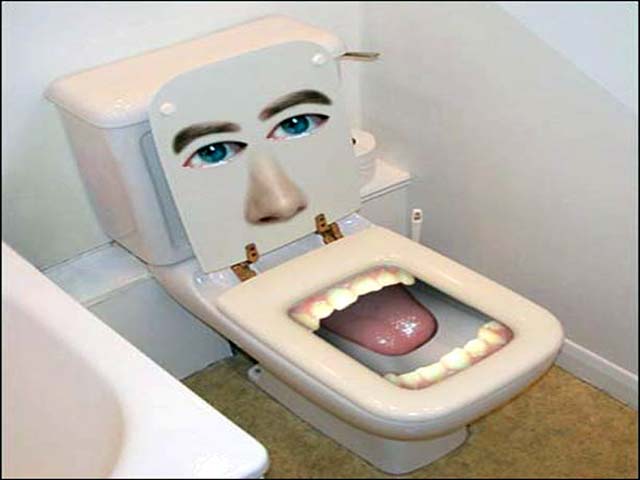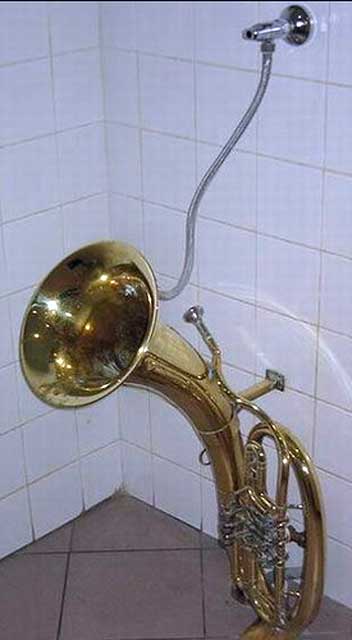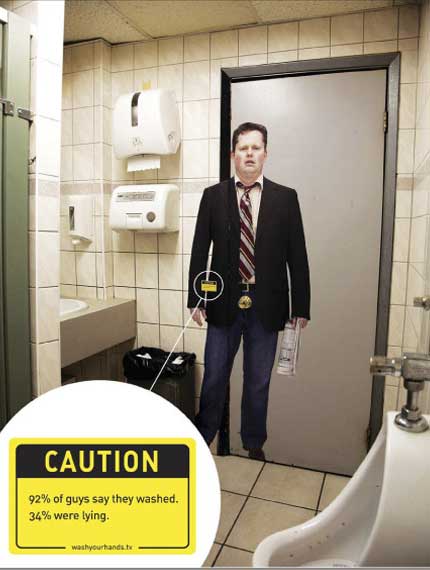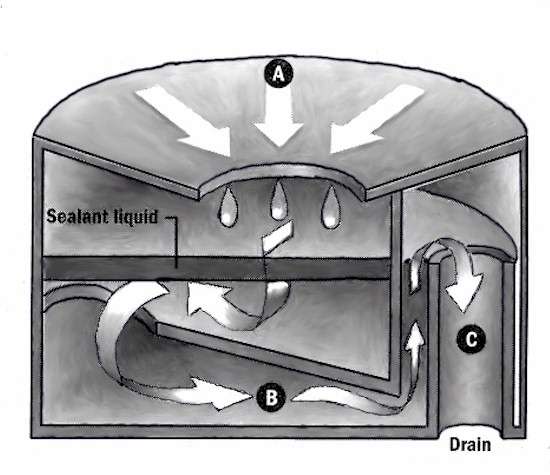How Do You Spell Relief
Basic Toilet Facts:When a child is locked in the bathroom with water running and he says he's doing nothing but the dog is barking, call 911. - Erma Bombeck Australia is an outdoor country. People only go inside to use the toilet. And that's only a recent development. - Barry Humprhies
Source: worldtoilet.org
More Advanced Toilet Facts:Development of sanitation and civilisation go hand in hand. Densely populated urban areas like Rome, Athens or Alexandria could not ignore their sanitation problems as they were forced to deal with a quota of approximately one million litres of urine and 160 tonnes of human fæcal substance each day. Rome, however, was well-known for good hygienic conditions. In the year 315AD Rome had 144 public toilets installed. Some even less-densely-populated areas came up with the idea of using sanitation devices. The oldest known working toilet with water flushing can be seen (though not used) in the small castle of Knossos, Greece - it is still functioning after about 4,000 years. Sanitary devices and sewage systems dating from 2500BC were found in Mohenjo-daro, a city located in the south of modern Pakistan, on the right bank of the Indus River. There, highly developed drainage systems were developed where waste water from each house flowed into a main drain. On the island of Bahrein in the Persian Gulf, a flush-type toilet was discovered dating to 1000BC. In China, archæologists found a toilet with running water, a stone seat and comfortable armrests in the tomb of a Chinese king of the Western Han Dynasty, dating from between 206BC and 24AD. Vespasianus (Otto Empire) for the first time levied a tax on toilets in 69AD. By 1210AD, in isolated places in Europe, the first attempts to install public toilets (which were manned by scavengers) led to a considerable improvement of the sanitation situation (for non-scavengers, that is). But it wasn't until the Renaissance in the 15th and 16th centuries that things noticeably improved. In that period the "closet" was invented and implemented in many buildings - basically a room in which people could do what they must into small pots, the contents of which were then manually removed. An Englishman named J D Harrington, living in France at the time, solved the problem of manual fæces removal by inventing the water closet, but it took almost 200 years before his invention was taken seriously. (This may in part stem from the fact that his water closet emptied directly into the street.) Sir John Harrington of the court of Elizabeth I actually installed one of his water closets in one of Elizabeth's residences, but she had it removed because she grew "nauseous hearing the materials moving through the pipes." (Perhaps her hearing was better than her sense of smell!) Another and perhaps more important problem with the wide acceptance of the water closet was that it required a rooftop reservoir be filled by servants - who had to carry water up the stairs. Many of the wealthy had servants, but carrying water up to the roof was both time- and labour-intensive. (Servants had other duties, after all.) These toilets were flushed by the use of a key, worn by the master of the house as a mark of status and control. Understandably, the water closet was flushed as few times as possible in a day. In 1668AD an edict was issued by Police Commissioner in Paris, requiring the construction of toilets in all houses and as early as 1739AD, the first separate toilet for men and women appear at a Paris ball. In the late 1730s, valve-type toilets were invented. The valves were rudimentary and often leaked, but by the 1770s further improvements on the hydraulics followed, making them safer. In many places these toilets are still in use today. Another major breakthrough came in around 1820 when the flush-type toilet was invented by Albert Giblin in Britain. The design is basically the syphon toilet with a water reservoir to flush the load away with a swift tug on a rope. This model is still quite common today. Since the 1820s there have been no fundamental changes, though minor improvements have included a more economic or ecologically sensible water controlling system, ergonomic designs, the implementation of canalisation and the invention of the toilet-rooms in European homes, rather than having the toilet outside. In 1824AD the first Parisian public toilet appeared. (It is unknown whether or not it was free to use.) In 1857 personal hygiene was developed further when an American, Joseph Cayetti, invented toilet paper. This enabled people to have a tissue paper convenient to use, which was relatively absorbent, and compact enough to be within reach when it was needed the most. In 1859AD, Queen Victoria had a toilet installed which was decorated with gold. Meanwhile in Asia, there were already bathing and massaging facilities equipped with toilet-like devices for the wealthy, but the cheaper European toilets invaded the homes of the less-wealthy classes, becoming the standard toilet design all across the world. In 1883AD, the first ceramic toilet was manufactured by Thomas Turiferd for Queen Victoria. In 1889AD, the first sewage treatment plant was constructed. In 1959AD all surface toilets were abandoned in Paris - though within a couple of decades they were back in the form of pay portable public toilets. In 1980AD public toilets began to be automatically controlled. Toilets Down UnderA dunny (sometimes spelled dunnie) is a term of Australian slang for a toilet, lavatory, or loo. The dunny most often refers to an outside toilet, also known as an outhouse in some places. The word has its roots in the 17th century, previously called dunnakin; from danna, meaning "human ordure", and ken, meaning "a place or house". The dunny itself can be a longdrop, flaming fury or even a septic system. (In the middle of nowhere, one can dig a hole, put some form of seat over it, and have a serviceable - if uncomfortable - dunny.) The simplest types of dunny are the pan and pit dunnies; both reasonably self-explanatory. The pan dunny has a pan under the seat to catch the "doings", while the pit dunny has a pit or shaft dug under the seat. The pit dunny took a lot of work to set up, but the amount of time between when the pit was dug, and when it filled enough to require moving the dunny to a new pit was relatively long. On the other hand, the pan dunny basically required only the building of the dunny "shack" itself, which could also be made more permanent. The pan had to be emptied regularly, however, as there was a strong risk of "overflow". A special type of pit dunny was known as the "flaming fury". It was built in such a way that when the pit grew too full, kerosene could be poured down into the pit and the whole lot burned. These usually had chimneys to siphon off the heat and gasses. It is interesting to note that many pit dunnies inadvertently become flaming furies, regardless of their original design, when some less-than-thoughtful person dropped their cigarette butt down into the hole. Sometimes it went out, at other times it set the toilet paper alight which smoldered for days. But sometimes that smolder worsened and the whole toilet could go up in flames, especially given the dried wood that was the hallmark of many constructions - or it could even explode. Sources: bbc.co.uk and forum "More Info", bbc.co.uk/dunny, sulabhtoiletmuseum.org
Urinal with Fly
Improves the aim... In Amsterdam, the tile under Sohiphol's urinals would pass inspection in an operating room. But nobody notices. What everybody does notice is that each urinal has a fly in it. Look harder and the fly turns into the black outline of a fly, etched into porcelain. It improves the aim. If a man sees a fly, he aims at it. Fly-in-urinal research found that etchings reduce spillage by 80%. It gives a guy something to think about. That's the perfect example of process control. Source: truthorfiction.com (text) urinal.net (pictures)
From the Toilet Museum:In India, when I founded Sulabh International in 1970 in a small village in Patna (Bihar), people laughed at me when I proposed to introduce the pay-and-use toilets. But my approach has succeeded and today 10 million people use Sulabh facilities every day. Most of the public toilets are being given to us to construct and maintain on a 30-year-base period at no charge to the State. At the beginning of the century most public toilets went underground in Europe, but in India they are still above ground. Much attention is now being given toward constructing these toilets on pay-and-use basis in slum areas where men pay half a rupee per use (females and children are always allowed to use the facilities for free). The facilities available include toilet, bathing or washing of clothes, and changing clothes. We also set up primary health care centres at these places. A lot of effort is required to get people's participation in efficient operation and maintenance of public toilets. This remains a big challenge to be met by NGOs. Based on my experience of the last 25 years, I am convinced that only cooperation between Government and NGOs can make sanitation programmes a success. Neither the NGOs nor the government can create an impact if they work in isolation. In 1970, realising that sewerage facilities will remain out of the reach of the society at large, Sulabh International introduced a pioneer technology twin pourflush latrines coupled with the control of human excreta based Biogas plants. We have constructed in the last 25 years over 650,000 toilet/bath complexes and 62 human excreta-based biogas plants and we are maintaining these. I believe this gives an appropriate solution to dispose of and recycle human waste into fertiliser, electricity and working gas. Source: sulabhtoiletmuseum.org
Bite My Butt
Well, Look at That!
Source: Sofitel, Queenstown, NZ
Classical Urinal
Source: thrillingwonder.blogspot.com June 2007
Water Isn't a Fixture in Some Cutting-Edge Urinalsby Jim Carleton Men's restrooms are quietly undergoing a plumbing revolution that some say could make them a lot cleaner - and healthier. Over the past few years, more than 100,000 have been retrofitted around the world with a new kind of urinal that doesn't use a flushing mechanism or even water. Instead, the urine passes to the sewer through a nonwater liquid seal that covers back over to prevent sewer odours from escaping into the restroom. Some scientists who have studied the technology say it drastically cuts down on germs in the restroom because there is less water in which bacteria can grow. The potential benefits are huge, they add, because so many diseases have been linked to public restrooms, including hepatitis outbreaks. Urine itself doesn't cause germs. In fact, urine by itself is so sterile that doctors say it can be used to cleanse a wound. The problem, they say, is that urine, when mixed with water in a restroom, can breed bacteria that can lead to disease. Flushing of the urinal splashes the bacteria into the restroom, spreading germs on walls, doors and other places people touch. With millions of urinals in the world, proponents of the no-water technology say the new toilets could save billions of gallons annually and help ease shortages in arid places, cutting down on utility bills at the same time. As much as 45,000 gallons gets flushed away annually in a traditional urinal. "This might be the greatest invention in toilets since the flush," says Charles Gerba, professor of environmental microbiology at the University of Arizona in Tucson, who this year published a report lauding the cleanliness of the technology. Researchers at the University of California at Los Angeles published a similar report in 2000, after installing a no-water urinal in one of their restrooms and comparing its bacterial growth rates with those of traditional urinals. Not everyone is convinced, though. Plumbers, pipefitters and some others who work in restrooms warn the lack of water may actually create a health threat, since the no-water urinals have to be wiped down manually on a regular basis to stay clean. Flush toilets, by contrast, are constantly undergoing water flow. "We believe in actual usage a lot of these urinals just aren't maintained," says Richard Drury, an attorney for the Southern California office of Piping Industry Progress and Education, a trade group that includes restroom workers and contractors. That group this year helped persuade the city of Los Angeles to delay a proposal by one of the urinal vendors, Falcon Waterfree Technologies, to amend the local plumbing code to allow installation of the new toilets, pending more studies. City building inspectors in September recommended that the postponement continue after their review determined the no-water urinals don't stay clean enough to meet city requirements, among other concerns. Meanwhile, officials in Minnesota, Illinois and Kentucky have also held up code changes requested by the other major vendor, Waterless Company, to have its urinals installed in those states, after receiving similar feedback from restroom workers over health and other issues, the company's officials say. Both Falcon, based in Los Angeles, and Waterless, based in Vista, California, say their toilets are safe and call the criticisms typical of concerns facing any new technology. "What the plumbers are really worried about is this will cost them jobs," says Marc Nathanson, a Los Angeles billionaire who is Falcon's largest investor. Mr Nathanson gained fame for selling his Falcon Cable TV to Microsoft Corporation co-founder Paul Allen's Charter Communications Incorporated for about $3.7 billion in 1999. Falcon, which has been in business since 2000 and says it has sold about 25,000 urinals in 22 countries, has toilets in high-profile venues including the Rose Bowl, London's Heathrow Airport and India's Taj Mahal. Waterless, which was started in 1989 and says it has installed "more than 100,000" in 16 countries, has deployed urinals in such places as the base of the Statue of Liberty and the National Aeronautics and Space Administration's Jet Propulsion Laboratory in Pasadena, California. One Falcon urinal has even been installed in Morton's, the tony Hollywood eatery catering to celebrities. Pamela Morton, the restaurant's general manager, says she agreed to try it last year after Mr Nathanson delivered a personal pitch over lunch. She says it has worked without a hitch, while cutting the need for her to call out a plumber every month to patch leaking valves. "I've got no complaints," Ms Morton says. The notion for a no-water urinal actually goes back to the late 19th century, but the modern technology didn't come about until 1989, when a German national named Klaus Reichardt living in California invented the first of the major no-water urinals being sold today. "I just thought we needed to do something about all the waste of water," says Mr Reichardt, who founded Waterless. Falcon began operations in 2000 selling a rival urinal designed by Ditmar Gorges, a fellow German who split off from Mr Reichardt's company to market his own design. Both urinals feature cartridge traps that funnel the urine past a layer of nonwater liquid, but differ some in the way they do it. At the giant Lake Avenue Church in Pasadena, which hosts a congregation of about 7,000, officials say they are saving as much as 25% on their water and restroom maintenance costs after retrofitting 30 urinals to the Falcon variety last year. Levi Heidelberg, the church's director of operations, says his janitors spray and wipe the porcelain bowls daily to keep them sanitary. As for users, few have offered much complaint. In the restroom of a Pasadena Hilton, Jim Dolenga, an area attorney, washes his hands after trying a no-water urinal. "There are so many toilets that automatically flush," he says, "that you almost don't notice the difference."
Wash Your HandsSource: adsoftheworld.com Dry RunThe Falcon Waterfree System cartridge - installed at the base of a urinal - traps odours and collects sediment. Here's a look at how it works:
Source: The Wall Street Journal, Tuesday 11 November 2003 photo credit Falcon See also:
North Carolina Poop CounterPreliminary studies have found that hog waste poses human health threats. The presence of pathogens (disease-causing organisms) in hog waste applied to land, antibiotic resistance, dust, and heavy metals in lagoon sludge are potential concerns. Despite the known and potential environmental problems associated with hog factories in North Carolina, hog production operations are insufficiently monitored. In fact, the extent of leakage of hog waste from lagoons into groundwater and the release of nitrogen into the air from hog waste are not inspected, measured, or monitored at all. Just how much hog waste are we talking about each day, each month, each year? How does this compare with the amount of waste generated by North Carolina's citizens? Check out the poop counter - it speaks for itself (Browser must support Java to view Java applets!).
For more on the unusual: events, abilities, means of self-expression, houses, conditions, people, luck, narrow escapes, resemblances, facts, diversions, heroism and more - click the "Up" button below to
take you to the Index page for this Odds and Oddities section. |
 Animals
Animals Animation
Animation Art of Playing Cards
Art of Playing Cards Drugs
Drugs Education
Education Environment
Environment Flying
Flying History
History Humour
Humour Immigration
Immigration Info/Tech
Info/Tech Intellectual/Entertaining
Intellectual/Entertaining Lifestyles
Lifestyles Men
Men Money/Politics/Law
Money/Politics/Law New Jersey
New Jersey Odds and Oddities
Odds and Oddities Older & Under
Older & Under Photography
Photography Prisons
Prisons Relationships
Relationships Science
Science Social/Cultural
Social/Cultural Terrorism
Terrorism Wellington
Wellington Working
Working Zero Return Investment
Zero Return Investment